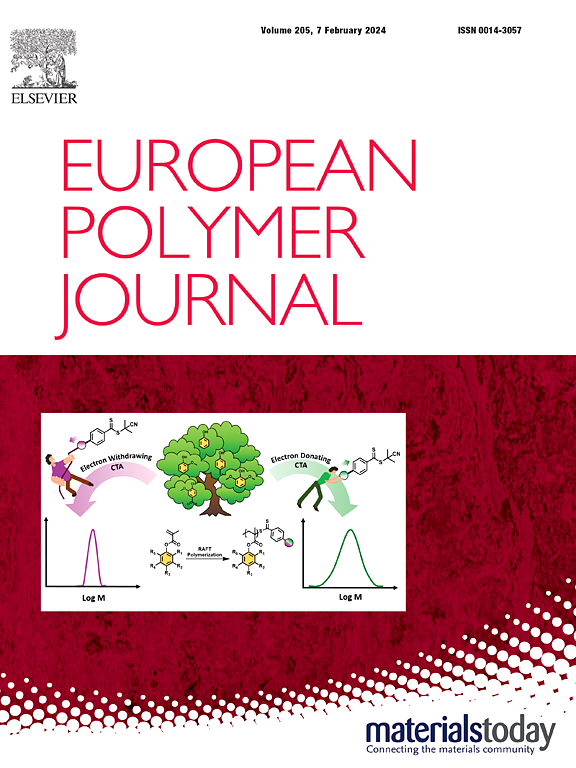pH triggered polycarvacrol-based antibacterial microspheres: Integrated offensive and defensive platform
IF 5.8
2区 化学
Q1 POLYMER SCIENCE
引用次数: 0
Abstract
The natural plant essential oil carvacrol exhibits substantial antimicrobial properties. However, its efficacy is significantly compromised following functionalization, thereby limiting its optimal application in polymer science. In this study, a quaternary ammonium carvacrol ester ionic liquid monomer was synthesized utilizing the ionic liquid technique. Subsequently, a series of cyclodextrin-grafted poly(quaternary ammonium carvacrol ester) polymer nanospheres were prepared via reversible addition-fragmentation chain transfer (RAFT) polymerization. The controllability offered by RAFT polymerization enables precise loading of carvacrol small molecules, representing a significant breakthrough for the incorporation of carvacrol into polymers. Particularly noteworthy is the CD-DMx formulation, which demonstrates exceptional antibacterial efficacy against both E. coli and S. aureus. This is attributed to the synergistic interaction between carvacrol and cationic components, resulting in a 100% antibacterial ratio. Additionally, the labile nature of the betaine ester bonds with carvacrol and cations facilitates the controlled release of carvacrol from the CD-DMx matrix while preventing its deactivation during functionalization. This property facilitates the transition of CD-DMx from exhibiting antibacterial properties (offense mode) to demonstrating anti-protein adhesion properties (defense mode). Furthermore, cytotoxicity assessments and electrospinning studies have demonstrated the biocompatibility and potential applications of CD-DMx in medical protective equipment. In summary, we have not only proposed a strategy for the efficient utilization of natural carvacrol essential oil but has also developed a green, environmentally friendly cationic essential oil-based antibacterial agent that is well-suited for medical applications.

求助全文
约1分钟内获得全文
求助全文
来源期刊

European Polymer Journal
化学-高分子科学
CiteScore
9.90
自引率
10.00%
发文量
691
审稿时长
23 days
期刊介绍:
European Polymer Journal is dedicated to publishing work on fundamental and applied polymer chemistry and macromolecular materials. The journal covers all aspects of polymer synthesis, including polymerization mechanisms and chemical functional transformations, with a focus on novel polymers and the relationships between molecular structure and polymer properties. In addition, we welcome submissions on bio-based or renewable polymers, stimuli-responsive systems and polymer bio-hybrids. European Polymer Journal also publishes research on the biomedical application of polymers, including drug delivery and regenerative medicine. The main scope is covered but not limited to the following core research areas:
Polymer synthesis and functionalization
• Novel synthetic routes for polymerization, functional modification, controlled/living polymerization and precision polymers.
Stimuli-responsive polymers
• Including shape memory and self-healing polymers.
Supramolecular polymers and self-assembly
• Molecular recognition and higher order polymer structures.
Renewable and sustainable polymers
• Bio-based, biodegradable and anti-microbial polymers and polymeric bio-nanocomposites.
Polymers at interfaces and surfaces
• Chemistry and engineering of surfaces with biological relevance, including patterning, antifouling polymers and polymers for membrane applications.
Biomedical applications and nanomedicine
• Polymers for regenerative medicine, drug delivery molecular release and gene therapy
The scope of European Polymer Journal no longer includes Polymer Physics.
 求助内容:
求助内容: 应助结果提醒方式:
应助结果提醒方式:


